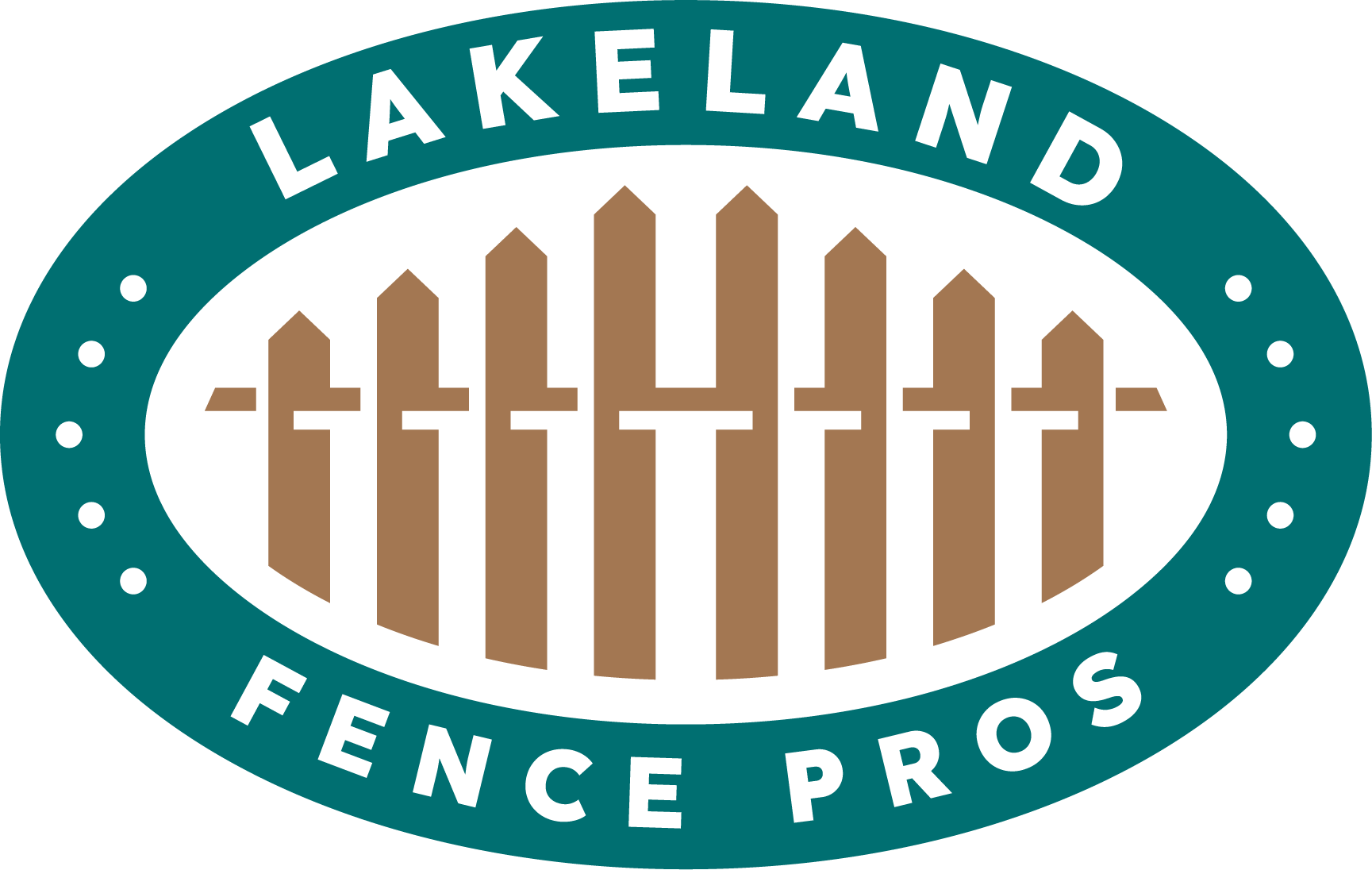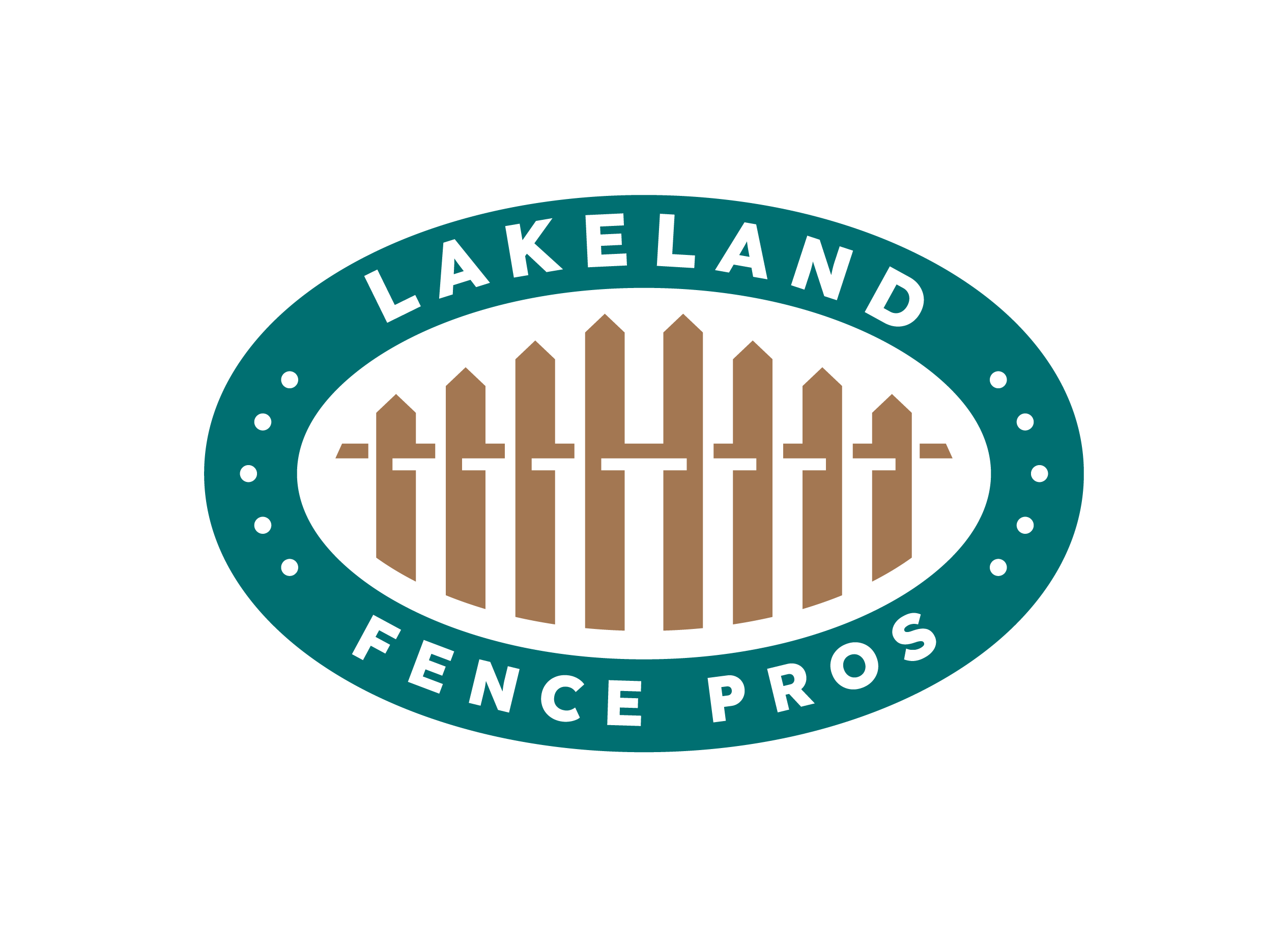In sunny, humid Florida, your beautiful wood fence faces year-round challenges — UV rays, heavy rain, and endless humidity. Without proper care, even the best wood fence can fade, crack, or warp long before its time.
That’s why consistent wood fence sealing in Florida is one of the most important maintenance steps you can take.
At Lakeland Fence Pros, we’ve built and maintained wood fences across Polk County, Florida, for years — so we know exactly how to help your fence stay strong and beautiful through Florida’s tough climate.
Why Wood Fence Sealing Is Essential in Florida
Florida’s tropical weather can be harsh on natural wood. The mix of sunshine, humidity, and storms creates the perfect recipe for fading, mold, and decay. Applying a protective fence coating locks out moisture, shields against UV rays, and preserves your fence’s rich color.
🟢 Pro Tip: Sealing your fence enhances the wood’s natural grain while defending it from Florida’s punishing weather — a simple step that makes a huge difference in lifespan and beauty.
How Florida’s Weather Damages Wood
-
Sun Exposure: UV rays bleach wood color and cause surface cracking.
-
Humidity: Encourages mold and mildew growth.
-
Rain: Promotes warping, swelling, and eventual rot.
-
Salt Air: Near the coasts, salt accelerates corrosion and surface breakdown.
🔵 Local Insight: In Polk County, humidity levels spike during summer. Fall and winter months are perfect for sealing since the wood dries faster and absorbs the product more evenly.
How Often Should You Seal a Wood Fence in Florida?
For most homeowners in Florida, resealing your fence every 2 to 3 years is ideal. However, exposure, wood type, and the quality of your previous coating all play a role.
1. Type of Wood
Cedar and redwood resist decay naturally and may need sealing every 3 years. Softer woods like pine, commonly used in Florida, should be sealed every 18–24 months for best results.
2. Sun and Rain Exposure
If your fence is in full sun all day or frequently gets hit by sprinklers, seal it more often — about every 2 years. Fences in partial shade can stretch that to 3.
3. Quality of Sealant
Not all coatings are equal. Oil-based, UV-resistant products tend to last longer than water-based sealers. Look for premium options designed for Florida’s moisture levels (see <a href=”https://www.homedepot.com/p/BEHR-Premium-1-gal-Natural-Clear-Wood-Finish-Home Depot’s wood finishes</a>).
🟠 Did You Know? You can test if your fence needs resealing by sprinkling water on it. If the water soaks in instead of beading up, it’s time to reseal.
Signs Your Fence Needs Resealing
If your wood shows any of these signs, it’s overdue for sealing:
-
Water soaks in instead of rolling off.
-
Gray or faded spots appear.
-
Cracking or splintering begins.
-
Mold or mildew appears near the base.
When you notice these, clean your fence thoroughly and reseal to prevent deeper structural damage.
How to Seal Your Wood Fence Properly
Here’s the step-by-step method Lakeland Fence Pros recommends for the longest-lasting results:
-
Clean Thoroughly – Use a fence cleaner or light pressure wash to remove dirt and mildew. Let it dry 48 hours.
-
Inspect and Repair – Replace cracked boards and tighten loose nails or screws.
-
Apply Sealant Evenly – Use a sprayer or wide brush, following the grain.
-
Dry Completely – Allow 24–48 hours before exposure to moisture.
🟢 Pro Tip: Choose a calm, dry day between 60°F and 85°F for best curing. Avoid sealing during Florida’s afternoon storms!
Choosing the Right Protective Fence Coating
For long-term protection, pick a sealant made specifically for Florida’s climate. The right coating should provide:
-
UV Protection to prevent fading and splitting.
-
Water Resistance to block moisture and swelling.
-
Mildew Resistance for year-round cleanliness.
-
Deep Penetration to protect below the surface.
Eco-conscious homeowners can check <a href=”https://www.bobvila.com/articles/best-deck-sealer/” rel=”nofollow”>Bob Vila’s list of eco-friendly sealers</a> to find durable, low-VOC options.
Polk County Climate: Why Timing Matters
Unlike coastal counties, Polk County doesn’t face much salt air — but we do battle intense heat and humidity. Those conditions make wood maintenance crucial.
🔵 Local Insight: We recommend scheduling sealing jobs between October and March, after hurricane season. The lower humidity allows the sealant to cure and bond properly.
Seasonal Fence Maintenance Schedule
Want your fence to last 15–20 years? Follow this simple Florida schedule:
-
Spring: Inspect for winter mildew or damage.
-
Summer: Trim back vegetation and monitor irrigation.
-
Fall: Clean and reseal if needed.
-
Winter: Tighten nails and inspect for cracks.
Consistent care keeps your fence sturdy and beautiful all year long.
Professional vs. DIY Fence Sealing
DIY sealing is possible but time-consuming — and easy to get uneven. A professional team like Lakeland Fence Pros ensures every inch of your fence receives even, climate-appropriate coverage using industrial-grade equipment and top-quality sealers.
🟢 Pro Tip: Professionals also clean and prep the fence before sealing — a crucial step many homeowners skip, leading to poor adhesion and premature fading.
Top Benefits of Regular Fence Sealing
-
Extends fence lifespan by up to a decade.
-
Protects against Florida’s moisture and termites.
-
Maintains wood color and texture.
-
Increases property value and curb appeal.
-
Reduces costly repairs or full replacements.
A sealed fence isn’t just beautiful — it’s protected from the ground up.
Local Testimonials from Polk County Homeowners
“Lakeland Fence Pros sealed our cedar fence last year, and it still looks like new. Even after weeks of summer storms, no gray spots or warping!”
— Michelle D., Winter Haven
“The team was friendly, quick, and professional. They cleaned, sealed, and left everything spotless.”
— Carlos P., Lakeland Highlands
“Our pine fence used to fade fast, but after they sealed it, it looks great all year. Highly recommend their maintenance plan.”
— Laura B., Bartow
Expert Tips from Lakeland Fence Pros
-
Always test sealant color on a hidden area first.
-
Keep soil and mulch a few inches away from the fence base.
-
Avoid painting over sealed wood — it can trap moisture.
-
Check annually for cracks or water absorption.
🔵 Local Insight: If your yard has sprinkler heads, adjust them to prevent constant fence soaking — a common cause of early rot.
Conclusion: Protect Your Investment
Florida’s weather can be brutal on wood fences, but regular maintenance makes all the difference.
Sealing your fence every 2–3 years protects it from UV rays, moisture, and mold — ensuring it stays sturdy and vibrant for years.
Whether you’re sealing your own fence or hiring professionals, make it a priority.
Your wood fence is an investment — protect it with care.
Lakeland Fence Pros proudly serves homeowners across Polk County, Florida, with expert installation, repair, and wood fence maintenance.
👉 Call For Your FREE Estimate Today!

